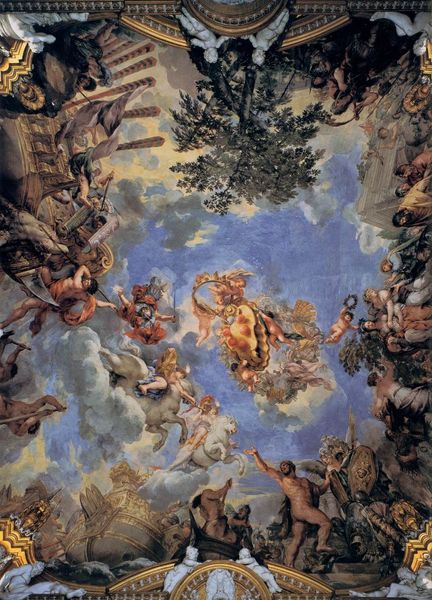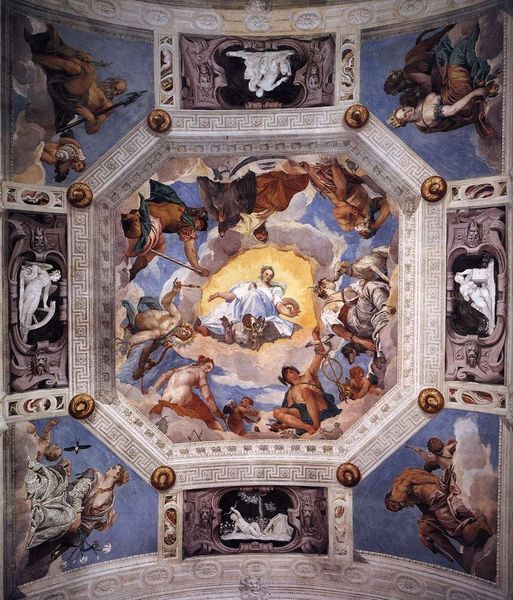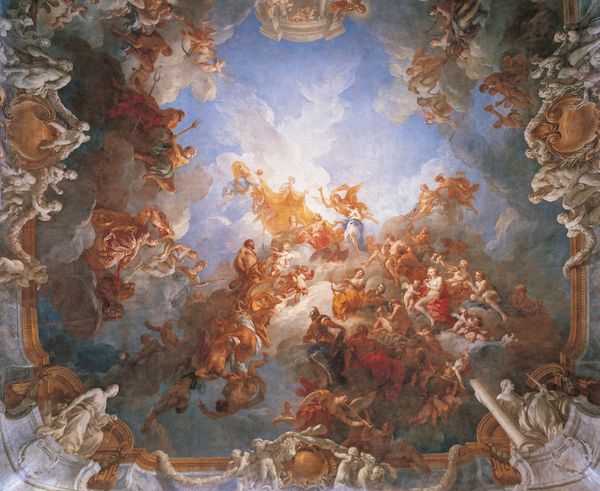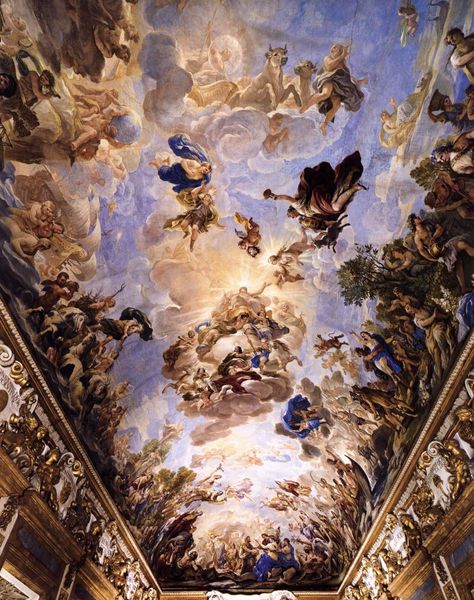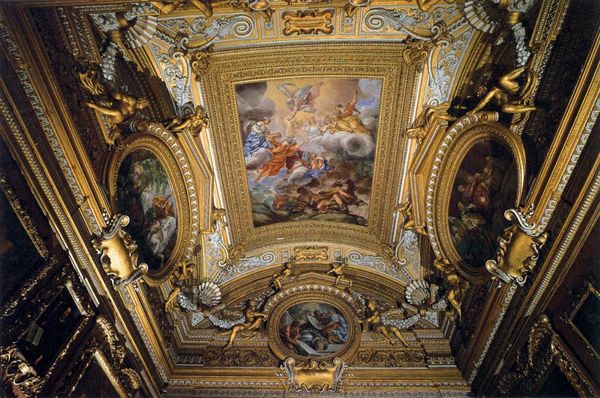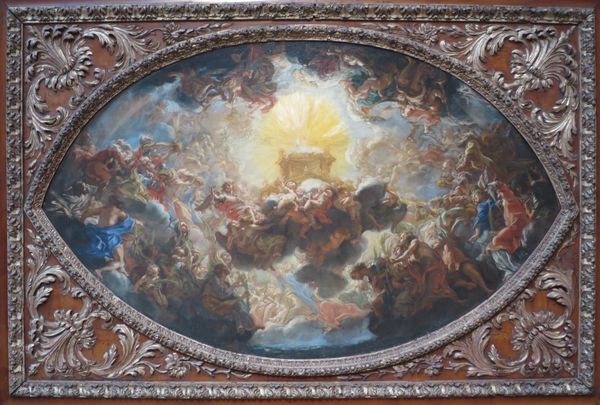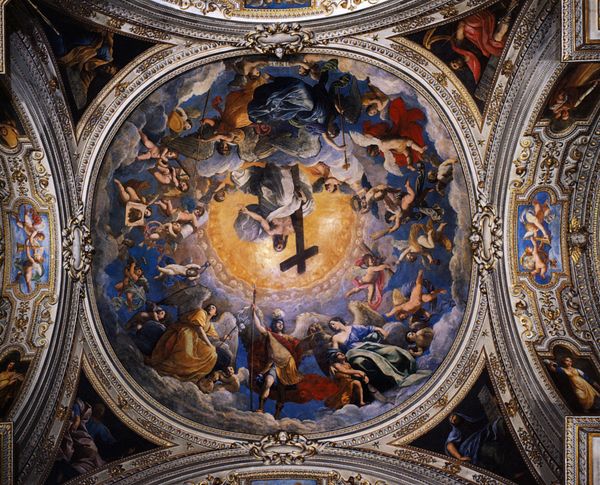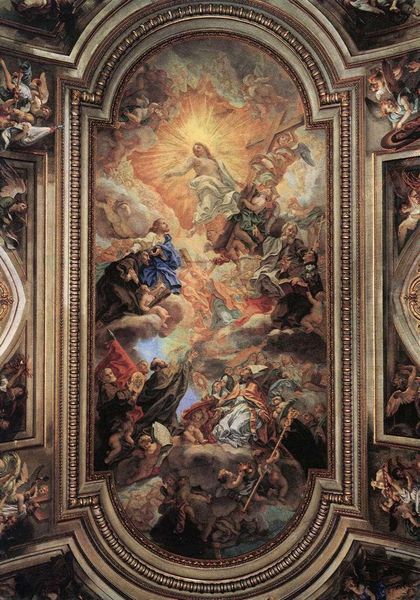
painting, oil-paint, fresco
#
allegories
#
allegory
#
baroque
#
symbol
#
painting
#
oil-paint
#
figuration
#
text
#
fresco
#
history-painting
#
italian-renaissance
Copyright: Public domain
Pietro da Cortona painted this fresco on the ceiling of the Palazzo Barberini in Rome sometime in the 1630s. It is not merely a decorative flourish. The work projects and reinforces the power of the Barberini family who commissioned it. The swirling figures, bursting through the architecture, symbolize the family’s ascent. Note the Barberini coat of arms with the three bees, prominently displayed. The image creates meaning through visual codes familiar to its contemporary audience. In its time, the Palazzo Barberini was not just a private residence, but a stage for displaying social status and political authority. In seventeenth-century Rome, families like the Barberini were patrons of the arts, using art to solidify their positions within the complex social hierarchy of the city. Frescoes like this, and the institutions that supported their creation, tell us much about that society and its values. To understand it better, we can consult archival documents, family histories, and studies of artistic patronage in Baroque Rome.
Comments
No comments
Be the first to comment and join the conversation on the ultimate creative platform.
